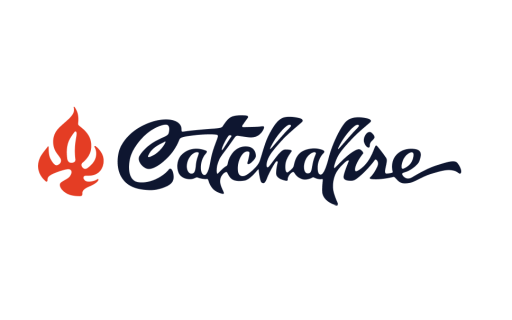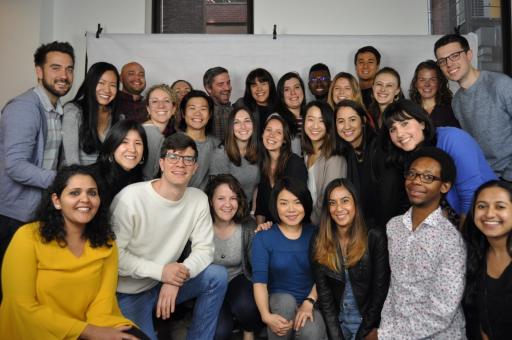How Catchafire launched its internal DEI work to better serve the community
Read how our member Catchafire launched its internal DEI work to better serve the community in this guest blog post by Gerard McGeary, senior director of strategic partnerships at Catchafire.

As I sit down to write this, the nation is breathing a sigh of relief at the outcome of the trial of former Minneapolis police officer Derek Chauvin for the murder of George Floyd; however, the relief has been tempered by the recent killings of Daunte Wright and Adam Toledo. And in Columbus, on the very same day of Chauvin’s conviction, the life of Ma’Khia Bryant was taken too soon under confounding though no less tragic circumstances. Updates from news outlets, Twitter, family and friends hauntingly transport me back to last spring. In the wake of the high-profile murders of Mr. Ahmaud Arbery, Ms. Breonna Taylor and Mr. George Floyd, I, like my other Black colleagues, found myself feeling a heightened mix of emotions that included hurt, anxiety, vulnerability, anger and despondency. True, the violence perpetrated against these few did not represent a new story; indeed, they were merely the most recent and visceral entries into history of Blacks in America – a history that has continually featured violence. They were a continuation of denials of due process, equality and the rights of Americans to say nothing of the rights of humans.
And still, the loss of these lives individually and collectively has had a profound impact on me, impact that I bring to my work as a Senior Director of Strategic Partnerships at Catchafire. Some context matters here as well. My colleagues and I were working remotely – mostly isolated from friends, colleagues and family—networks that might provide comfort and mutual support under normal times. This was of course because of the COVID pandemic, which itself was taking advantage of the racial inequities in our society to deliver increased lethality and disproportionately more deaths to Blacks in communities across the country.

So it was meaningful that Catchafire, the social good organization that I work at, created space for people to virtually convene. It was important that the voices of Black colleagues were centered and amplified. My Black colleagues and I, who had already been connecting as a proto-employee resource group (ERG), had been checking in with one another (indeed Blacks across the country were doing this in our normal day-to-day lives with folks we may not have spoken to in years), and we had created space for community. But the institutional heft of the company’s executive leadership recognizing the importance of the moment and the importance of showing solidarity and affirming anti-racist values were what we needed. This in many ways was the true beginning of Catchafire’s Diversity, Equity and Inclusion (DEI) journey.
DEI work at Catchafire was long-delayed and well overdue — something our CEO Rachael Chong has admitted to the entire organization on multiple occasions. Catchafire has a mission to mobilize the world’s talent for good. We do this by connecting nonprofit organizations that have specific capacity-building needs with an online community of skills-based volunteers who want to provide their time and talent pro bono to benefit organizations that work in areas they care about. Equity is at the philosophic core of our access model — we seek to provide nonprofits with access to critical support at no cost to the nonprofits themselves. To achieve this, we partner with grantmakers, high net worth individuals and governments who sponsor access.

Given our mission and our goals of strengthening nonprofit communities across America and around the globe, having strong DEI values and company practices internally is essential to our long-term success. It also provides us with a more solid foundation to deliver our programs to nonprofits that are diverse, with equity and inclusion central to our delivery.
So, what has the journey looked like thus far? Over the summer our first three ERGs were established based on initial demand from our team of 70+ employees. They are ERGs for 1) Black-identifying employees, 2) members of the LGBTQ2+ community and 3) employees who identify as women. Our DEI Council was then established. I was named to the Council and elected as one of its two co-chairs, a role that I am honored to serve in and one that has given me a unique vantage point into the company’s DEI journey.
Through the fall and winter, the DEI Council met regularly. In addition to employee representatives, our CEO, Chief People Officer and Director of People also sit on the council. The work together was not easy at the start. One of the key areas that required attention was building trust. The history of delaying DEI work left management with a trust deficit among many on and off the Council. Additionally, subjects, topics and actions we discussed and considered led to conflict (not all bad) and oftentimes touched on sensitive areas. We all were learning how to work together and to productively engage to drive DEI forward in different areas such as hiring and company policies. What proved essential in moving our work forward was a set of community agreements that we brought to each conversation, acknowledgment of harm done, ownership of missteps, grace and a shared sense of purpose and commitment to the work.
At the same time, our leadership team hired DEI consultants, Inclusv, to begin to coach senior leaders, conduct an organizational audit (which featured extensive interviews across the team), synthesize their findings and deliver a set of recommendations for company priorities and trainings for the team. The audit was shared in written form and read out over a couple of All-Hands meetings, which served as a timestamp that established a shared understanding of the company’s baseline on DEI from which we intend to grow.

Catchafire has entered into its next phase of DEI work internally. Trainings with a specific emphasis on bias, spheres of oppression, margins and mainstream and issues of race will commence this month, and new streams of work are underway that flow directly from the audit results and priority set established by our leadership team in consultation with the DEI Council. A major stream of work underway, which should conclude in the next month is our company’s first Equity Statement, which will sit alongside our Mission and Vision as core values that align our team and guide our work and place in the world.
Our internal DEI work and work we are doing as individuals at Catchafire are the foundational steps for us to embody a commitment to diversity, equity and inclusion that transcends words and ultimately advances DEI and racial equity work in the realms where we have influence: working with grantmakers to meet the needs of nonprofit organizations in their communities. Establishing this collective consciousness and commitment as a team and across the organization is essential for us to bring real systems change across our nonprofit programming and services.
I look forward to sharing the steps we’re taking to bring a racial lens to our operations and programming next week.
Gerard McGeary
Senior Director, Strategic Partnerships
Catchafire
gerard@catchafire.org
Philanthropy Ohio’s blog is meant purely for informative discussion of topics, practices and viewpoints in philanthropy. We collaborate with various members, funders, consultants, philanthropy-serving organizations and Professional Partners to bring you quality content. Guest authors are partners in our collective vision for a just and vibrant Ohio through impactful philanthropy. Statements on this blog reflect the author’s personal opinions and do not necessarily fully represent the opinions, policies, practices, values and mission of Philanthropy Ohio. This blog may contain testimonials, opinions and real-life experiences of members. However, the experiences are personal to those particular members, and may not necessarily be representative of all members or of Philanthropy Ohio.